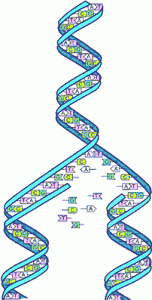Mold Remediation is not merely cleaning the molds. It involves the elimination of the source of moisture; containment of the molds to control its further spread; removal of dead molds and spores from infested areas; and the treatment of the area to avoid future occurrence of molds.
During the course of mold remediation, the contractors wear Personal Protective Equipment (PPE) to avoid contamination. They wear gloves to avoid contact with allergens and cleaning solutions; and a respirator with HEPA filter to prevent entry of small particles. Disposable protective clothing is recommended too to forestall the transfer of mold and to prevent skin contact. The PPE should be worn all throughout the process to protect the entire body.
In all mold remediation processes, the goal is to remove the contaminated materials in a manner that will discourage its recurrence. During the process, one or more of the methods may be utilized: Clean up with anti-microbial agent; application of organic-based enzyme or fungicide or mold encapsulator; and sanding or painting. Though professionals have different strategies, the procedure boils down only to three steps.
The first method employed is identifying and cutting off the source of water. Wet vacuuming is utilized to collect accumulated water from the area but only if it is still wet. If the affected surfaces are already dry, the molds will be wiped out or scrubbed with water and detergent. Afterwards, the place has to be dried quickly.
The second process is to spray the infested area with biocide. Biocide is a liquid which eradicates mold. It is Environmental Protection Agency (EPA) approved to kill the molds. HEPA (High-Efficiency Particulate Air) vacuum is recommended for the final cleanup of the dust that settled on surfaces beyond the remediation area.
The last step is to encapsulate the molds. This is done by spraying the moldy area and its surrounding with paint or whitewash. This ensures that the remaining spores do not spread and no more molds grow.
All the materials damaged by molds are removed and sealed in a 6-mil polyethylene sheeting before bringing outside the containment area. This is a way to contain the spores and prevent its release into the air before final disposition.
Upon completion of the process, post-treatment testing is conducted to find out if the remediation was successful. It involves evaluation of the area to detect any airborne spores. Passing the clearance test is an indication that the contaminated area was completely treated.
